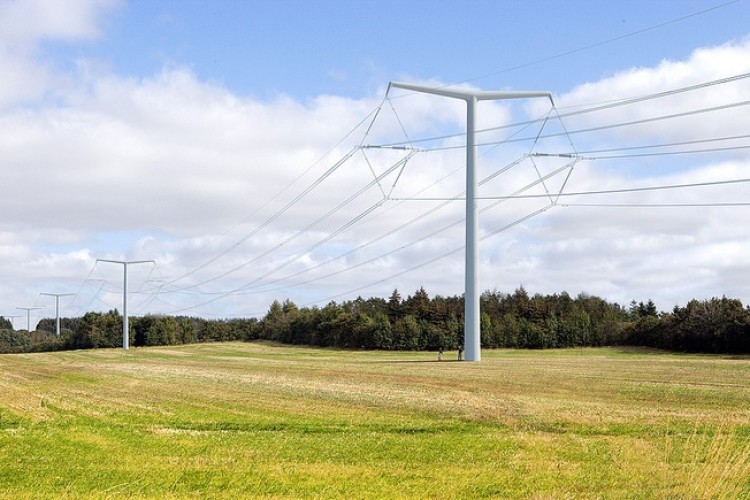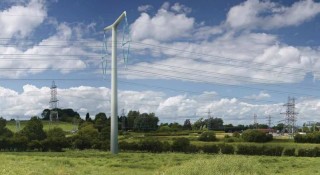The T-pylon, designed by the Danish architects and engineers Bystrup, won a design competition in 2011 organised by the Department of Energy & Climate Change (DECC), Royal Institute of British Architects (RIBA) and National Grid.
The new design is a monopole with a T-shaped cross arm – hence the name T-pylon. It is made up of fewer than 10 major sections and is designed for simple construction.
The pylon beat more than 200 other entries because of its arrangement of electrical components meant it could be lower than the equivalent steel lattice pylon, reducing its impact on the landscape.
Engineers from National Grid and Bystrup have spent the past two years working up the winning design through to construction of full sized prototypes. Earlier this year two types of pylon were built in Denmark which underwent mechanical strength and load testing. Monopile foundations are used where appropriate, as with wind turbines, to help the structure coe with overturning forces. The insulators that hold the wires in places have been electrically tested in Sweden.
The T-pylon is designed to carry the highest voltage 400,000 volt lines that are needed for the Hinkley Point connection project in Somerset. The new pylon could be an alternative to the steel lattice pylon on other new major projects which will be connecting up low carbon and renewable generation to the grid. However, it is not seen as a replacement for existing pylons, and there may be places where the traditional design remains the best choice for new projects, the National Grid said.
The pylon height was able to be lowered because of the innovative layout of the insulators and conductors (electricity wires) in a diamond “earring “shape. It meets the same safety clearances as the three-armed steel lattice tower but is 10m-15m shorter. The T pylon stands at about 35m high.

National Grid executive director Nick Winser said: “The RIBA competition was held to find a design which would meet all our safety and reliability criteria and belong to the 21st century. The steel lattice pylon has served us well over the years and will continue to be part of the landscape but we’re looking forward to see people’s reaction to the new T pylon design.”
Energy secretary Ed Davey said: “To see T-pylon becoming a reality just 20 months after winning the competition, is a fantastic achievement for National Grid and the Danish architects, Bystrup, and I’d like to congratulate them on their progress. One of the key objectives of the pylon design competition was to see if innovations in design and technology could improve an 85-year-old structure, and one that has divided popular opinion since its inauguration in the 1920s.
“We face a significant challenge over the coming years connecting new electricity plants to our homes and businesses. Now communities can be offered a new choice and a radical departure from the traditional lattice. A smaller pylon, one-third shorter than its predecessor, with different finishes allowing it to blend into the landscape – T-pylon is a striking and elegant design.”
The Hinkley Point connection which runs between Bridgwater and Avonmouth is needed to carry all the new electricity generation planned for the southwest. This includes the new nuclear Hinkley Point power station which, if it goes ahead, will be one of the largest single generators in the country.
Got a story? Email news@theconstructionindex.co.uk




